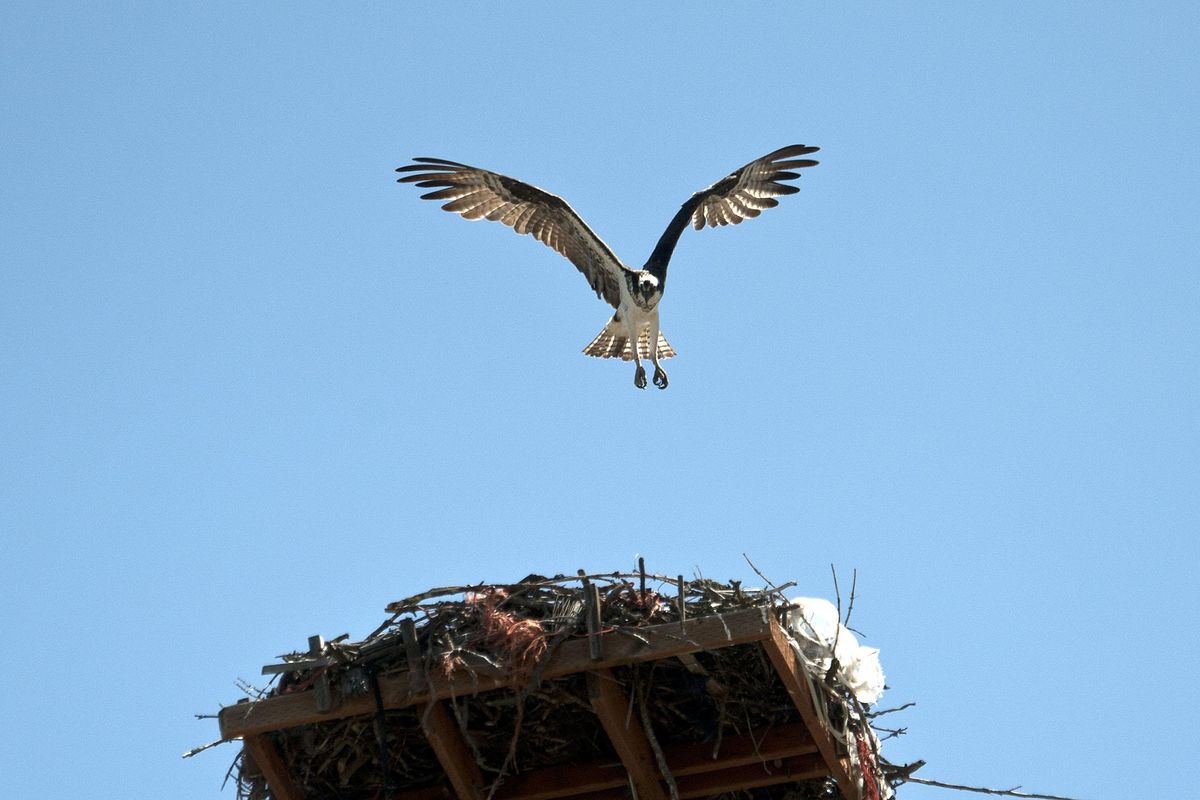Birding brightens driver’s commute on I-90

The last time I had heard great-horned owls calling, I was drifting off to sleep in a tent in a British Columbia campground.
So, I was a bit perplexed as I fumbled for my car keys at the Liberty Lake park ’n ride one February evening. Plaintive refrains of “Who-who-whooooo-whooooo-whooooo” were drifting across the asphalt. They were coming from a stubby row of ornamental evergreens, where a great-horned owl was either advertising for a mate or defending its territory at the start of breeding season.
I cupped my hands around my mouth for my best owl imitation. Two owls answered back, hooting over each other.
“Love is in the air,” I thought as I drove away, picturing a pair of golden-eyed owls working on their nest, lining it with downy feathers plucked from their breasts.
I became a commuter in December, when my job transferred from The Spokesman-Review’s Coeur d’Alene office to downtown. The switch means that I spend about 90 minutes each day in a vehicle – mostly a car, sometimes a bus. Friends recommended books on tapes to make the drive go faster. I actually Googled “yoga while driving,” figuring that stretching would a good compliment to NPR broadcasts. I didn’t expect to be birding.
But the first day of the commute, I found myself watching two pairs of hawks soaring over Interstate 90. The next morning, I started counting hawks.
The “sit and pounce” predators make frequent use of light posts, utility poles and even the tall sign advertising Cabela’s above the remaining green space in Post Falls and Liberty Lake. They use their keen eyesight to track rodent activity from the high perches. I’ve had to brake to avoid hitting a hawk that swooped into the grassy median in front of my car.
“How was your commute?” a coworker asked one morning. “It was a five-hawk day!” I replied.
I keep a cheap pair of binoculars under my passenger seat for country roads, where I can safely pull onto the shoulder for bird watching. But at speeds of 70 mph, with rudimentary bird identification skills, I’m mostly guessing at the flash of feathers. A redtailed hawk, so common in the area? A rough legged hawk – an Arctic visitor commonly seen here during the winter – named for its feathered legs?
For help identifying birds visible from I-90, I turned to Dr. Kim Thorburn. The former director of the Spokane Regional Health District is an avid birder, and a member of the Washington Fish and Wildlife Commission.
Crows and magpies are two of the most commonly seen freeway birds, she said. They’re scavengers, part of the cleanup crew for roadkill. The occasional bald eagle gliding overhead is likely looking for an easy meal, too, Thorburn said.
From time to time, I spot smaller birds of prey. Those could be American kestrels, the smallest of North American falcons, she said. They hover in the air before dropping on prey. If I was lucky enough to see one at close range, I would appreciate the male’s striking slate-blue head and wings and rust-colored back and tail, Thorburn told me.
I might also see a northern harrier, a small hawk that flies low to the ground. They hunt acoustically, and their faces are disc-shaped like an owl’s to direct sound to their ears.
Along the Spokane River at Stateline, my list of freeway birds has expanded to include belted kingfishers, herons, swallows and blackbirds, both red-winged and Brewers. I’ve also seen flocks of wild turkeys forging on the grassy hillsides alongside the freeway. I should be watching for great-horned owls in the evening, Thorburn told me, because they occupy the same habitat type as the raptors.
I still count hawks on my morning commute, but these days I’m mostly consumed with two osprey nests on platforms that are visible from I-90 – one in Washington and one in Idaho. For several weeks this spring, I watched diligent osprey parents carrying branches to the nests. Each seems to be occupied. But I haven’t seen any baby heads poking up yet, or any fish deliveries to the nests.
I’ve also taken an interest in the pigeons that live under freeway overpasses. They’re nasty birds – invasive, non-natives also known as rock doves. But the presence of pigeons has brought peregrine falcons to the area, Thorburn said.
My morning commute invariably slows near the Sprague exit, where pigeons line up on the light poles above the freeway. Some day, I’ll get lucky. I’ll be stuck in traffic, and I’ll look up to see peregrine falcon making a spectacular dive for a pigeon.
Peregrines will overtake most birds in mid-flight, the National Geographic website assures me. They’re fierce aerial predators who hunt from high above. When they plummet to their prey, the dives can reach 200 mph.
It’ll be worth being stuck in traffic to see that.